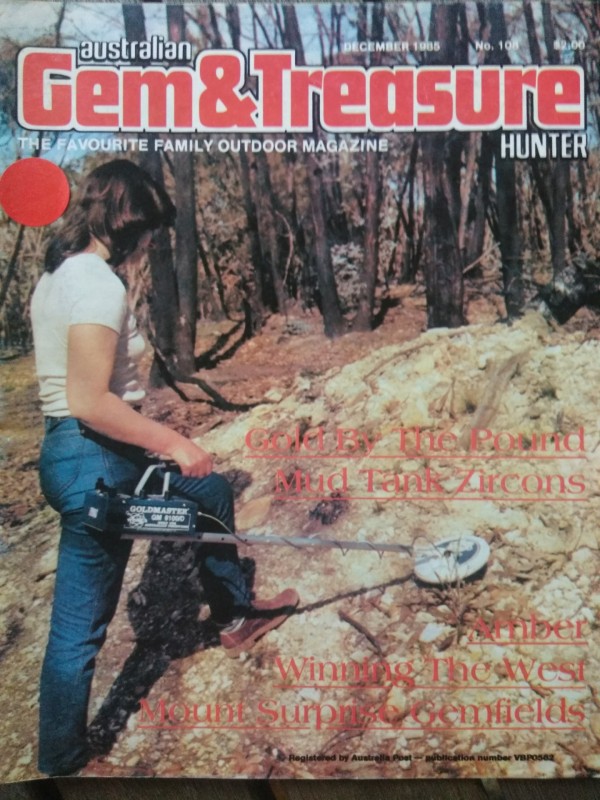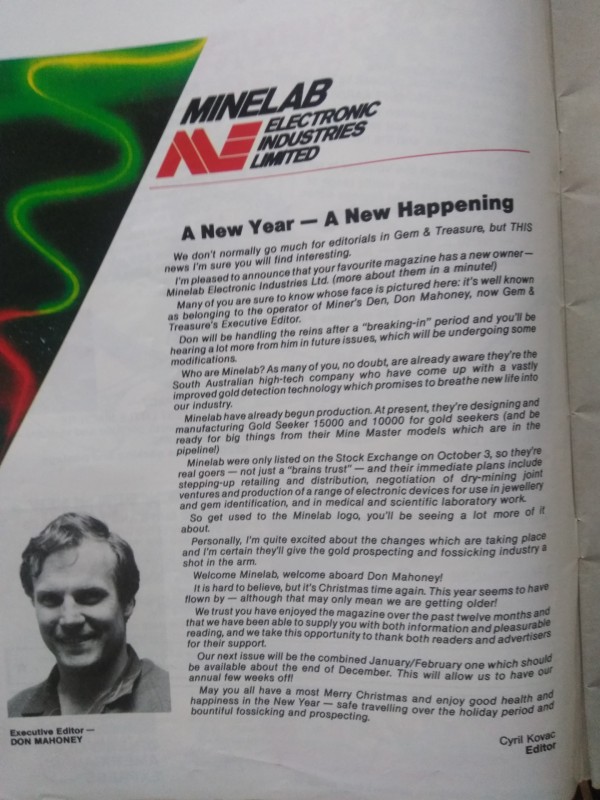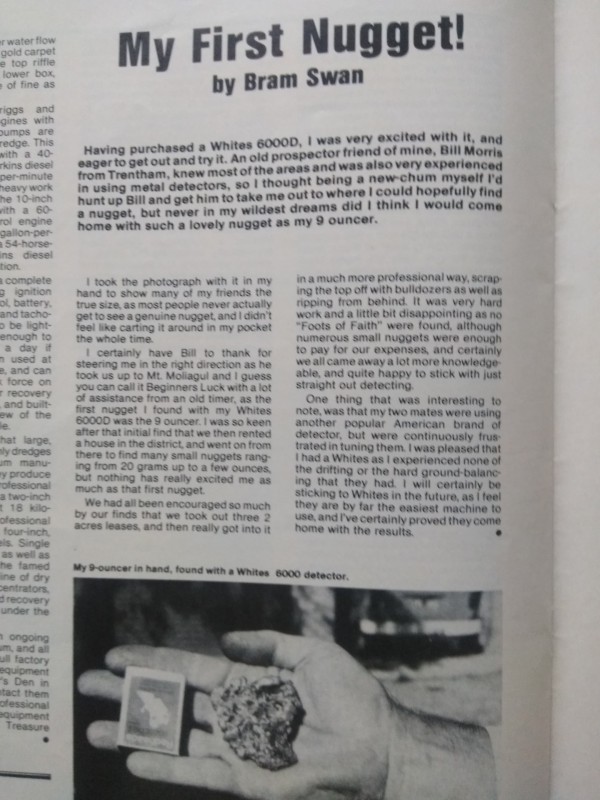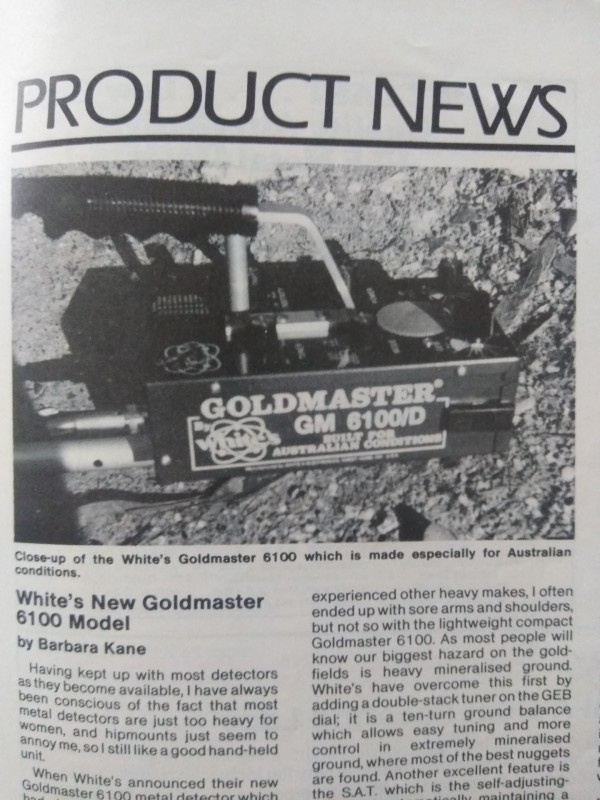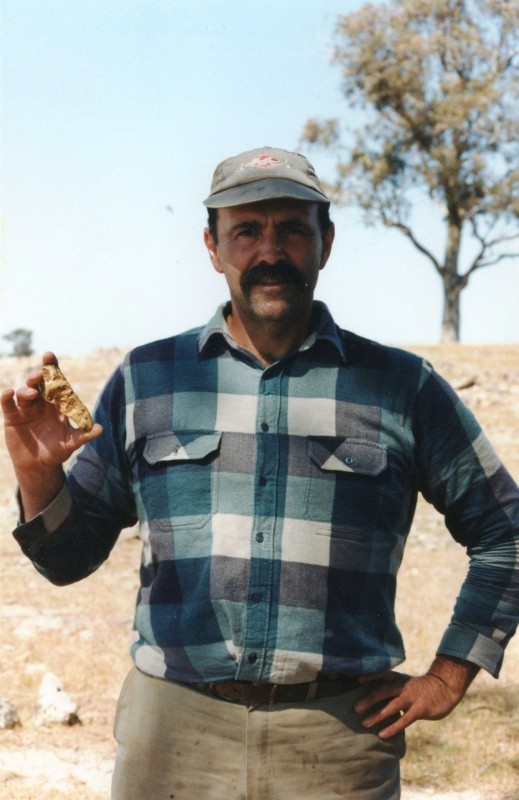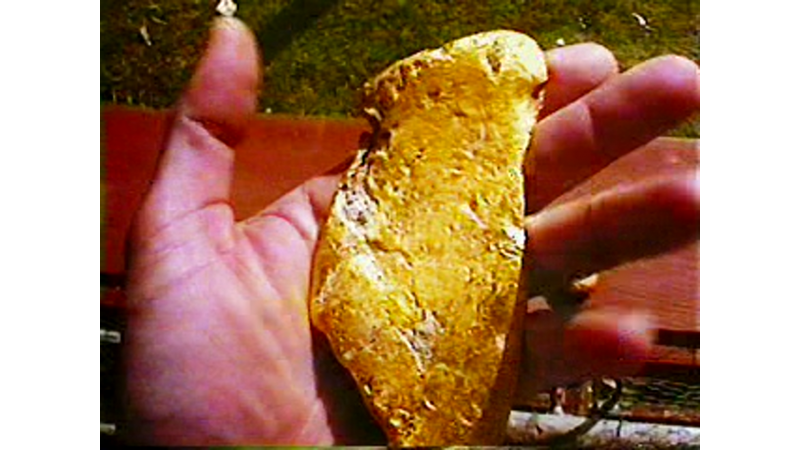-
Posts
576 -
Joined
-
Last visited
-
Days Won
14
Content Type
Forums
Detector Prospector Home
Detector Database
Downloads
Everything posted by jrbeatty
-
Karelian: It's sad to see the white mullock heaps nearly all pushed. Only a few years back that area was just as the old Diggers had left it - 😞
-
The shallows below the reef are a good spot for SDC's and QED's (or any detector with a small coil) Interesting geology there. The emplacement of the Tarnagulla granodiorite pluton to the east (as well as the surrounding Moliagul and Kooyoora Plutons) caused gold rich quartz fracture veins (reefs) to form in the Ordovician sediments as they slowly thrust through them. The Mcintyre Range is a hardened contact metamorphic edge to the Tarnagulla pluton (as is Rheola hill to the north) During the early Tertiary, heavy continuous rainfall eroded both the plutons and rich contact zones, depositing large nuggets in paleovalleys (leads) radiating off them. Possum Hill lead and Guys Rush lead are two examples, as are Caters, White and Humbug hills to the north. The Berlin goldfield north of Rheola is also the remnant of an even larger paleovalley that has now completely eroded away, leaving only giant nuggets sitting on a granite bottom!
-
Ah Mcintyre! From the top of that hill where the Matrix reef is located you are overlooking one of the world's great nugget fields. Found much good gold in that area, biggest being 30 oz. The shallow ground around the reef yielded plenty to the early vlf detector operators.
-
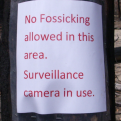
Do You Do Detector #2 On A Hunt Or Only Stick To #1
jrbeatty replied to Gerry in Idaho's topic in Detector Prospector Forum
Gerry: I always take two detectors, not uncommon to have technical issues with one. I only work new ground, so I do the initial prospecting with the lightweight QED PI. I then run a GPX over found patches if it's deep or highly mineralised. Occasionally this brings up extra gold. -
Ok Gerry, I'll bite :) Found gold with all my detectors over the years (starting in the late 80's with the ML GT 16000) with one exception: The Garrett Infinium. Couldn't find its own backside using both hands, I walked over a heap of good gold with it (as I later discovered using detectors more suitable for Australian conditions) The detectors that have found me the most ozs so far would have to be the SD 2200 and the QED, with the 5000 not far behind.
-
Simon: the glory days are only ever as far away as the next patch of new ground. You make your own glory days. The important thing is to keep looking for new ground. The safe old familiar flogged areas are, sadly, never going to be the stuff that dreams are made of. 😞
-
A 1985 Gem and Treasure Hunter (later Gold Gem and Treasure) from Australia. The magazine had just been purchased by a new Australian detector company called Minelab Electronic industries. The Goldseeker 15000 was being tested at the time by a young bearded bloke called Reg Wilson, yet not a single Minelab product appears anywhere. There is an advertorial for the new Whites GM6100D and others for Bounty Hunter, Tesoro and the Garrett A2B Groundhog. These were also the days when your first colour could well be too heavy to comfortably carry around 🙂
-
Nice, but he needs coaching lessons on centering signals and target recovery. Painful to watch.
-
Yes Reg. John gave up the gold not long after the belated release of the Minelab SD2000. He was the principal Minelab prototype tester here for many years. Took to teaching detecting lessons for awhile, but soon moved on to farming tourists on Victoria's "shipwreck" coast. He once mentioned to me his greatest prospecting regret was ignoring a 250 oz piece, calling it a junk signal. He has never returned to prospecting. His "sort" of gold was now rapidly disappearing and chasing flysh*t had no appeal at all. John with his kind of gold. Tertiary piece found not far from Longbush, Moliagul Victoria.
-
The current US Army PSS-14 (incorporating both conventional detector and ground penetrating radar) could have interesting civilian potential. Anyone over there tried one?
-
Same here Dave. All weed spraying and cattle feeding for me till Victoria opens up again. Good to see those faulty X coils still delivering the goods. Well done Rick! :)
-
Top stuff Simon, one of my favourites :)
-

Carrot Pin Pointer Question
jrbeatty replied to Valens Legacy's topic in Metal Detecting For Coins & Relics
Geof: Rarely use a pinpointer either, Coil on edge works fine - but now avoid digging holes in the dark :) Damaged 30 oz piece: -

Carrot Pin Pointer Question
jrbeatty replied to Valens Legacy's topic in Metal Detecting For Coins & Relics
Rick: Damn oath it matters! Always dig around the target location with the pick, using the pointy end to prise up the centre part. That way nothing gets hurt and the piece remains collectable. Some friends and I once dinged a lovely 30 oz piece digging in the dark - -
First published in 1963, historian Geoffery Blainey, in his excellent book "The Rush That Never Ended" detailed the numerous significant pre - Hargreaves gold finds already mentioned above. Nothing new in the "Herald" article indeed. Blainey credits Hargreaves with being a master self publicist who found little gold personally, but by telling all and sundry where and how gold may be recovered (In order to obtain governmental financial reward) forced the government's hand to legalise gold mining long before it was ready or prepared. This led to the hurried introduction of the licensing system, which by nature of its heavy financial cost to diggers, eventually led to armed rebellion at Eureka.
-
I remember the legendary John Hider Smith once cleaned out a very rich patch at Wychitella, Vic, except for the 7 ozer he always parked on top of . Some unkind soul left a note there telling him he needn't worry about it anymore - :) Another prospector cleaned out a rich "doze and detect" MRC at Waanyarra Vic, except the richest part was under the vehicle park. John H S found that one, so he more than broke even -
- 13 replies
-
- 4
-

-

-
- minelab gpz 7000
- gold found
-
(and 1 more)
Tagged with:
-
Nice GB. Another one colour patch - dontcha just hate it when that happens!
- 13 replies
-
- 2
-

-
- minelab gpz 7000
- gold found
-
(and 1 more)
Tagged with:
-
Nice work Peg. Love those smooth colours - :)
-
That's a great read Chet. Captures the essence of the early gold rush years extremely well. Sadly, no images survive.
-

For Those Who Go Out Prospecting I Have A Few Questions
jrbeatty replied to bigtim1973's topic in Detector Prospector Forum
Count me in Jim. I prefer prospecting to fossicking. All or nothing - quite often nothing, but then you can get very lucky sometimes. bigtim1973: best to approach it as a hobby with occasional benefits. 👍 Prospected gold found miles from any known goldfield: -

Nox'ed Another Bigun Out Of Trashy Workings
jrbeatty replied to Gerry in Idaho's topic in Minelab Equinox Forum
Gerry: Just love those Yankee specimens - :) Nice work! -
Speak for yourself Geoff :)
-

Did You Find A Nugget In A Black Velvet Bag?
jrbeatty replied to mn90403's topic in Detector Prospector Forum
Detected a gold bottle lying in the bush - and then Reg Wilson claimed it back a few minutes later :)



